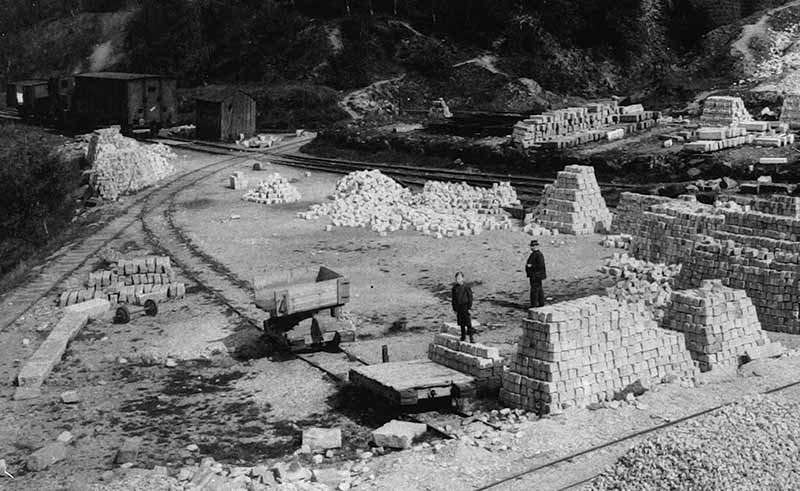Our topographic model roughly represents the area of today’s town of Hauzenberg. Each granite cube represents a quarry, whether abandoned or still in operation.
The railroad provided the decisive impetus for opening a quarry. The local line from Passau to Hauzenberg, which is also shown on the model, was completed in 1904. The quarries then shot up from the ground like mushrooms. Around 150 locations in total are known to have existed.
The railroad paved the way for the development of the granite industry. A rail connection became a decisive location advantage. Railroads made it possible to transport heavy freight quickly, reliably, and above all, cost-effectively. At the same time, the construction of the railroad itself required vast quantities of building and quarry stone for stations, bridges, embankments, culverts and track beds.
By the middle of the 19th century, the market for granite had exploded. Paving stones in particular were in huge demand. Railroads and paving stones became the “dream team” of the granite industry.
Another important element was needed for the success of the granite industry, namely skillful entrepreneurs. I’ll tell you about this in the next chapter. Our tour continues at the rock face with the steel slabs.
